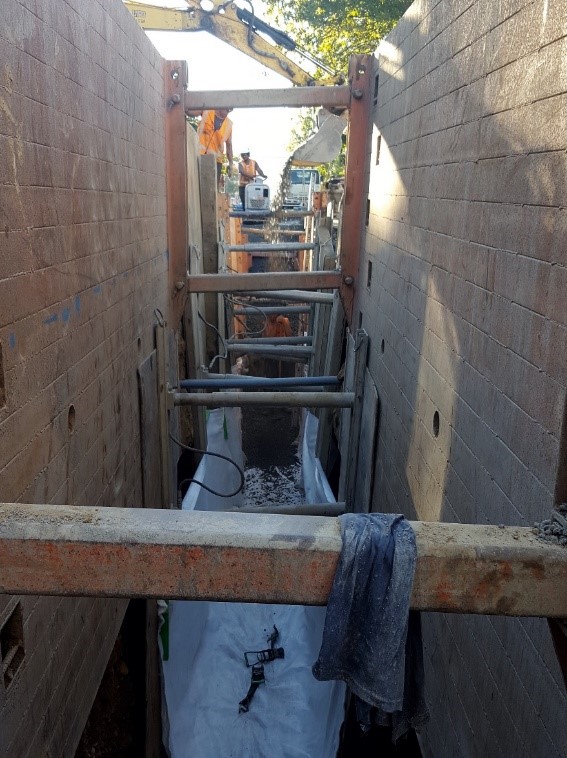
Ward St is a residential suburban street in Upper Hutt. Along with the risks associated with residents and drivers the road also has a rail crossing for the Wairarapa line. The existing ground is generally uncompacted river boulders – making trenching operations challenging. Our project was the second stage of a renewal of an under capacity wastewater main in the street. The renewal was offline with a section installed under the rail corridor by pipe ramming.
The work to replace these assets was complex and presented a number of significant risks. Some key risks that were managed include:
- Deep trenching in difficult ground conditions
- Rail interface and pipe ramming
- Traffic management in a suburban street
- Dealing with significant design change
The renewal was a over 3m deep in places and our team used a variety of shielding and shoring methods to create a safe work environment. The work was especially difficult because the ground conditions were not favourable. Uncompacted river boulders meant that the sides of the trenches were constantly collapsing, our shields had to be “dug in” and size of the site and the area to be reinstated became much larger. Despite these additional challenges the site team worked in a safe and methodical manner to keep the project on track.
The project included a section of main installed in a sleeve under the rail corridor by pipe ramming. We successfully installed 20m of 610mm dia. casing and sliplined it with the wastewater main. The pipe ram was not affected by the difficult ground conditions that were hampering the trenched sections of the job.
Pipe ramming is specialist work and requires the right tools to be used by trained and experienced people. We used a Grundoram Koloss pipe ramming tool capable of ramming casings up to 1200mm diameter and up to approximately 70m depending on ground conditions. Our team has received training from TT Technologies both in NZ and abroad, they have completed a series of successful projects in the region over the last decade.
By selecting to ram this crossings rather than construct it traditionally the project was able to avoid extended interruption to services on strategic road and rail networks. This eliminated some significant risks associated with working in a rail/road environment, working out of hours and undertaking deep excavations.
Traffic management was self-delivered by our dedicated in house team. The team dealt well with the added risk of a rail interface and we were able to change the way we worked when the risks associated with ground conditions resulted in the site getting significantly wider.
There was significant design change during the work due to a design error in the investigation phase of the project. This resulted in the grade of the pipe being changed such that it was almost flat. Our team adapted well to the change and took steps to ensure that a quality product was handed over despite reduced tolerances.
This project allowed us to showcase our ramming capabilities alongside more traditional open trenched solutions. We managed the rail interface and the traffic management well. And the project remained on track despite significant design change and difficult ground conditions.
 |
Casing being installed for the rail crossing
|
 |
Traffic Management and site fencing.
|